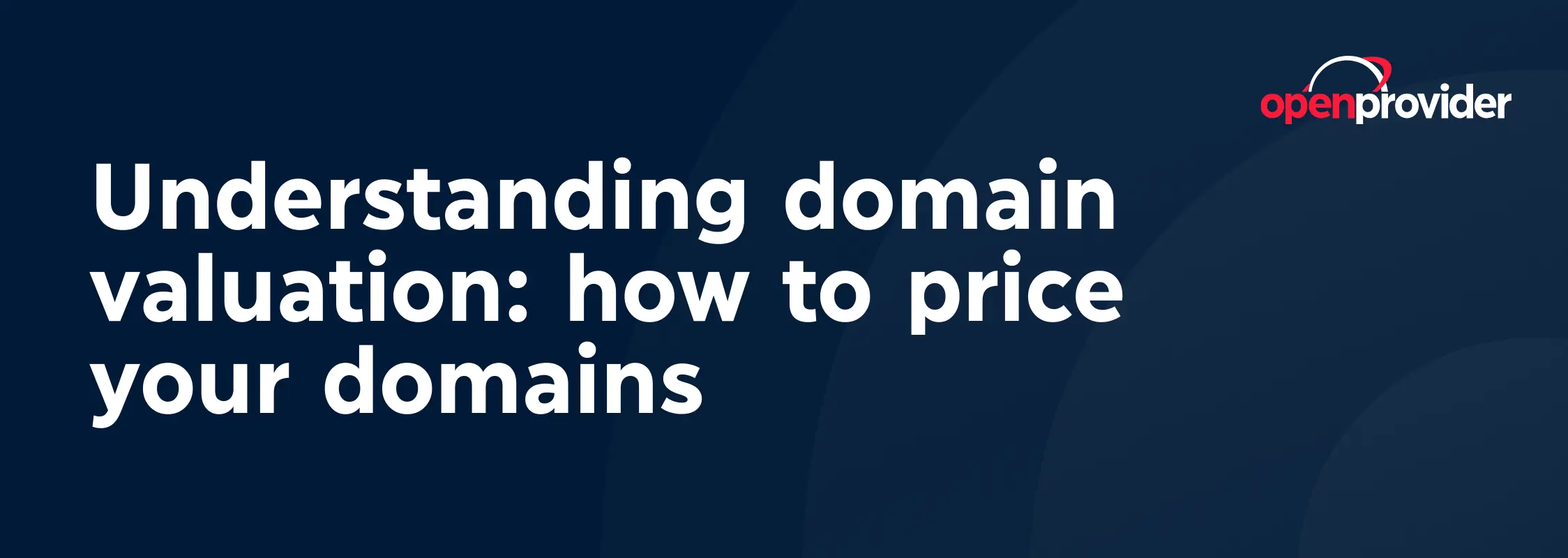In today’s digital-first world, domain names are more than just web addresses—they’re valuable assets that can shape a brand’s online presence. Whether you’re buying, selling, or simply holding onto a domain as an investment, understanding how to value it is key to making informed decisions. Pricing a domain correctly can mean the difference between a quick, profitable transaction and a domain that lingers unsold for years.
This article will guide you through the essentials of domain valuation, exploring the factors that influence value, the methods to determine it, and actionable tips for pricing your domains effectively.
What is domain valuation?
Domain valuation is the process of determining the monetary worth of a domain name. Like real estate, domain names are unique assets, and their value is influenced by a range of factors. A premium domain can command high prices due to its potential to drive traffic, enhance branding, or rank well in search engines.
Domains serve as the foundation of online identities, and their valuation reflects their role in the broader digital marketplace. Knowing how to evaluate a domain’s worth can help sellers set fair prices and buyers make sound investments.
But why is domain valuation so important? For sellers, pricing a domain too high can deter buyers, while pricing it too low means leaving money on the table. For buyers, understanding a domain’s value can prevent overpaying and ensure the domain fits their strategic goals.
This balance is what makes accurate domain valuation a critical skill in the domain marketplace.
Key factors influencing domain value
Several factors determine the value of a domain. Let’s dive deeper into the most important ones:
1. Length and simplicity
Shorter domain names are easier to remember, type, and share. This simplicity increases their value, especially when combined with a catchy or meaningful word. For instance, single-word domains like “coffee.com” or three-letter domains like “xyz.com” often fetch high prices due to their brevity and appeal.
Consider the practical advantage of short domains: they reduce typing errors and are more likely to stick in someone’s memory. In a world where attention spans are short, this memorability translates directly into higher value.
2. Keyword relevance
Domains containing popular keywords—especially those relevant to high-demand industries—are often highly valued. These keywords improve a domain’s potential for search engine optimization (SEO), helping businesses attract organic traffic. For example, a domain like “buyhomes.com” would be attractive to real estate companies, as it aligns with search queries their audience might use.
Keyword relevance is particularly critical for domains in competitive niches such as technology, e-commerce, and finance. A well-chosen keyword can enhance a brand’s visibility, making the domain a strategic investment for businesses aiming to dominate their market.
3. Top-level domain (TLD)
The TLD—or domain extension—is another significant factor in valuation. Historically, .com domains have been the most valuable due to their universal recognition and trustworthiness. For instance, “example.com” will likely have more value than “example.net” or “example.biz” simply because of user preference and familiarity.
That said, newer TLDs like .xyz, .ai, and .co have gained popularity in niche markets. These extensions can command higher prices if they align with a domain’s purpose. For example, “fintech.ai” could appeal to a tech-savvy financial startup, while “gifts.store” might attract an e-commerce business.
4. Brandability
Brandability refers to how effectively a domain name can function as a brand. Highly brandable domains are often unique, easy to pronounce, and evoke positive associations. For instance, “zappos.com” has strong brandability because it’s fun, distinctive, and memorable.
Businesses value brandable domains because they help establish a strong identity in crowded markets. A name that’s simple yet evocative can become synonymous with a product or service, driving long-term brand equity.
5. Domain age and history
Older domains with a clean history typically command higher prices. Age can indicate stability and search engines may favor older domains in rankings, particularly if they have a track record of quality content and backlinks.
However, a domain’s history can also work against its value. Domains previously associated with spam, scams, or penalties from search engines may be devalued. Tools like the Wayback Machine and Whois history lookups can help assess a domain’s past before making an investment.
Methods for valuing a domain name
Determining a domain’s worth requires a combination of research, tools, and expert analysis. Here’s a closer look at the most common valuation methods:
1. Comparative sales analysis
Looking at recent sales of similar domains provides valuable insights into market trends. For example, if “greenenergy.com” sold for $20,000, you might estimate that “solarenergy.com” could fetch a similar price.
Meanwhile, platforms like DNJournal and NameBio track completed domain transactions, offering a wealth of data to help you understand what buyers are willing to pay for comparable assets.
2. Automated appraisal tools
Online tools like Estibot, GoDaddy Appraisal, and Sedo provide quick, automated domain valuations. These platforms analyze factors such as length, keywords, and TLD to generate an estimated value.
While these tools are helpful for initial assessments, they have limitations. They may overlook subjective factors like brandability or niche market demand, so use them as a starting point rather than a definitive answer.
3. Professional appraisals
For high-value domains or complex cases, professional appraisals from domain brokers or valuation services are an invaluable addition to appraisal tools. Experts can provide a nuanced evaluation, considering both market trends and the unique attributes of your domain.
This option is particularly useful if you’re preparing to sell a premium domain and want to ensure your pricing reflects its true market potential.
Steps to determine your domain’s value
If you’re looking to price a domain for sale, follow these actionable steps to ensure your valuation is accurate and competitive:
1. Research comparable sales
Analyze the sale prices of similar domains. Look for domains that match yours in length, keywords, and TLD to identify patterns in buyer behavior. NameBio and other marketplace databases are great resources for this research.
2. Use appraisal tools
Automated tools can provide a baseline estimate. Be sure to cross-reference results from multiple platforms to identify a consistent price range. This will give you a better sense of where your domain stands in the market.
3. List your domain for sale and check offers firsthand
The most precise way to determine what buyers are willing to pay for your domain is to list it for sale and let the market decide. Many platforms, such as Sedo, allow you to list domains for free without setting a fixed price.
This approach does require patience. Early offers might be lower than expected, and rushing to sell could result in an inaccurate valuation. It’s important to give your listing enough time to attract a wider range of potential buyers.
Selling your domain
Once you’ve determined your domain’s value, it’s time to find the right buyer. Here are key strategies for selling your domain effectively:
1. Set a fair price
Your research should guide your pricing. Strike a balance between being competitive and realistic—pricing too high may scare off buyers, while pricing too low risks undervaluing your asset.
2. Create a compelling listing
When listing your domain on marketplaces like Sedo, Flippa, or GoDaddy Auctions, craft a description that highlights its strengths. Include details like keyword relevance, TLD, traffic potential, and brandability to attract interest.
3. Be open to negotiation
Negotiation is often part of the sales process. Be prepared to justify your asking price with evidence from your research, but also remain flexible. A willingness to compromise can lead to quicker deals.
4. Work with a broker
For high-value domains or if you’re new to domain sales, partnering with a domain broker can be a smart move. Brokers have access to networks of serious buyers and can handle negotiations on your behalf, saving you time and effort.
Conclusion
Accurate domain valuation is a vital step in navigating the dynamic domain marketplace. Whether you’re buying or selling, understanding a domain’s worth ensures you’re making well-informed decisions.
Do you have a portfolio of multiple domains? Openprovider is here to support your domain goals. From access to over 1,900 TLDs at the lowest prices to a simple, intuitive platform that helps you manage and grow your portfolio, we’re here to help.


